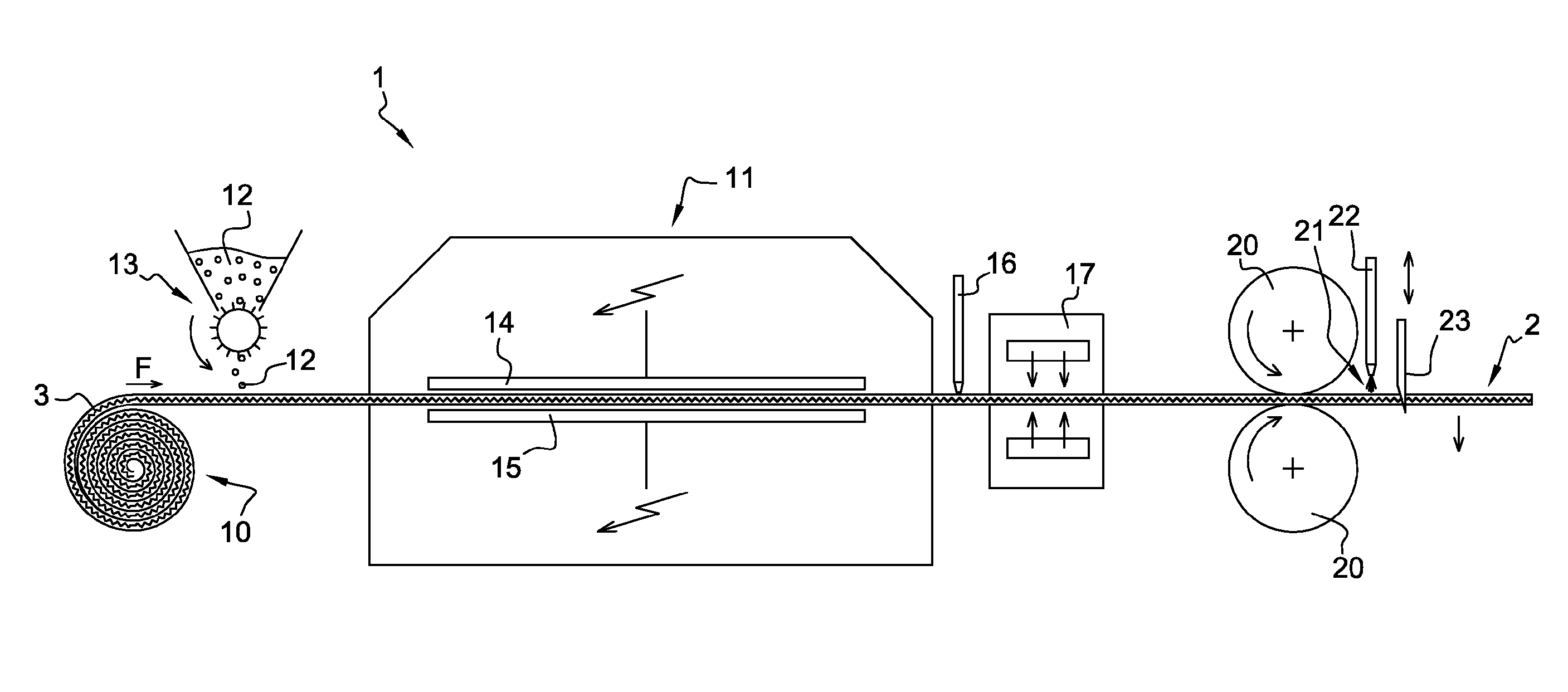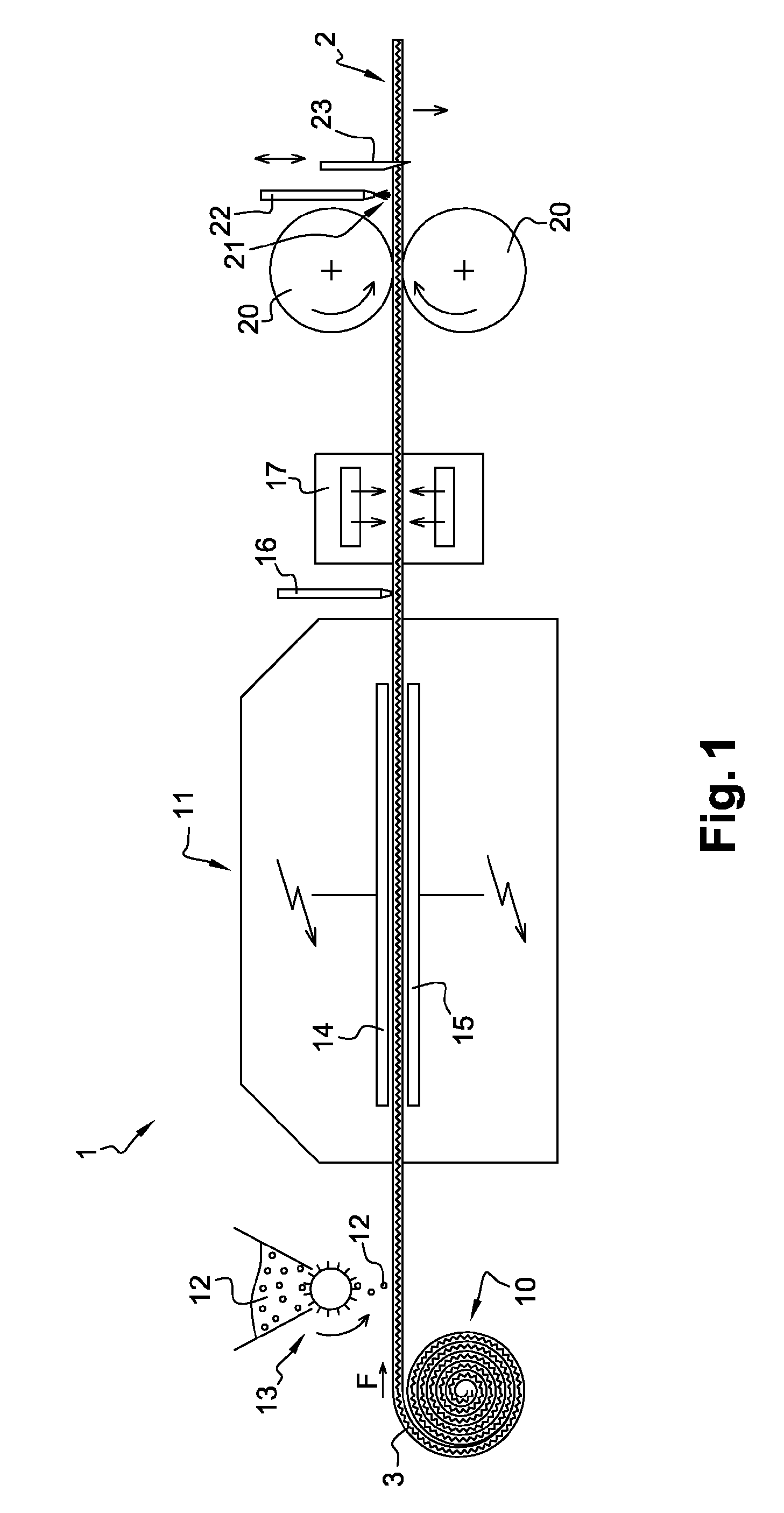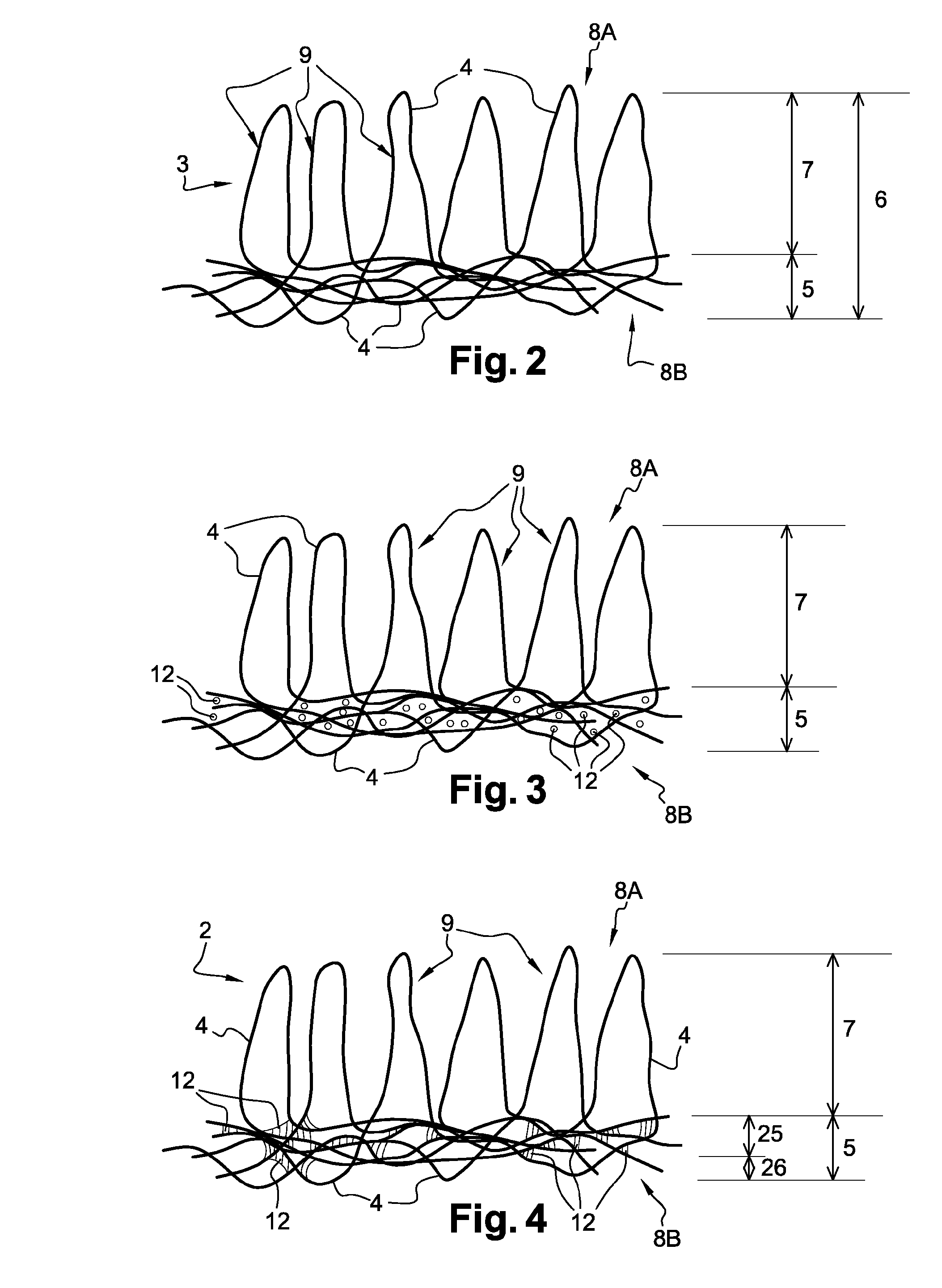Method for making a textile coating and textile coating
- Summary
- Abstract
- Description
- Claims
- Application Information
AI Technical Summary
Benefits of technology
Problems solved by technology
Method used
Image
Examples
example 1
[0049]In this example, the web 3 was a velour needled product weighing 600 g / m2 and having a thickness of approximately 6 mm. It consisted of a mixture of fibres 4 of 6.5 dtex, 17 dtex and 150 dtex, made of polypropylene and initially containing no binder.
[0050]The binder 12 consisted of high-density polyethylene, which was sprinkled at the rate of 90 g / m2 on the web 3. Before being incorporated in this web, it was present in the form of a powder having a granulometry of 0 μm to 80 μm and is commercialized by the company ABIFOR (Wutöschingen—GERMANY) under the reference 1300 / 20.
[0051]Impregnation of the web 3 by the powdery binder 12 was carried out in the device 11 fitted with flat electrodes 14 and 15. The alternating electric field produced between these electrodes 14 and 15 had a value of 2 kV / mm and a frequency of 50 Hz. The web 3 containing the powdery binder 12 had an alternating electric field applied to it for 20 sec. It was then placed for more than 2 min. in the oven 17 s...
example 2
[0056]In this example the same web 3 and the same binder 12 were used as in example 1.
[0057]This binder 12 was sprinkled at the rate of 120 g / m2 on the web 3.
[0058]Impregnation of the web 3 by the powdery binder 12 was carried out in the device 11 fitted with flat electrodes 14 and 15. The alternating electric field produced between these electrodes 14 and 15 had a value of 2 kV / mm and a frequency of 50 Hz. The web 3 containing the powdery binder 12 had an alternating electric field applied to it for 20 sec. It was then placed for more than 2 min. in the oven 17 set at a temperature higher than the melting temperature of the binder and lower than the melting temperature of the fibres.
[0059]A carpet 2 obtained according to this example 3 was subjected to the Lisson test as defined by the EN 1963 standard from the year 1997. Following this test, a determination by visual evaluation of the level of defibration of carpet 2 was performed and gave a value of ⅘ in the machine direction, an...
example 3
[0061]In this example, the web 3 was a velour needled non-woven, weighing 550 g / m2. Its fibres 4, which initially did not contain any binder, were made of polyester and had a denier of 6.7 dtex.
[0062]The binder 12 was an epoxy resin, which was sprinkled at the rate of 150 g / m2 on the web 3. Before being incorporated in this web 3, it was present in the form of a powder having a granulometry of 0 μm to 100 μm and is commercialized by the company BAKELITE (GERMANY) under the reference 6171TP.
[0063]Impregnation of the web 3 by the powdery binder 12 was carried out in the device 11 fitted with flat electrodes 14 and 15. The alternating electric field produced between these electrodes 14 and 15 had a value of 3 kV / mm and a frequency of 50 Hz. The web 3 containing the powdery binder 12 had an alternating electric field applied to it for 20 sec. It was then placed for more than 2 min. in the oven 17 set at a temperature higher than the melting temperature of the binder and lower than the m...
PUM
| Property | Measurement | Unit |
|---|---|---|
| Thickness | aaaaa | aaaaa |
| Composition | aaaaa | aaaaa |
| Area | aaaaa | aaaaa |
Abstract
Description
Claims
Application Information
 Login to View More
Login to View More - R&D
- Intellectual Property
- Life Sciences
- Materials
- Tech Scout
- Unparalleled Data Quality
- Higher Quality Content
- 60% Fewer Hallucinations
Browse by: Latest US Patents, China's latest patents, Technical Efficacy Thesaurus, Application Domain, Technology Topic, Popular Technical Reports.
© 2025 PatSnap. All rights reserved.Legal|Privacy policy|Modern Slavery Act Transparency Statement|Sitemap|About US| Contact US: help@patsnap.com



